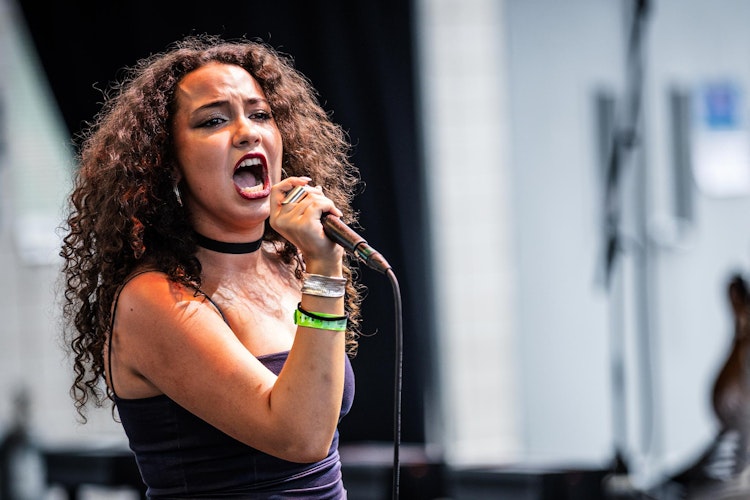Latin rock, a dynamic genre shaped by the fusion of American rock and roll with diverse Latin American influences, has a rich history that reflects the interwoven cultural tapestries of the United States and Latin America. Learn more about the roots of Latin rock, the careers of notable Latin rock figures, and the current state of the genre.
Latin American Roots
Latin music weaves diverse and rich stories of a land shaped by a multiplicity of indigenous, African, and European influences. Indigenous communities laid the foundation for many different styles, including New Orleans jazz, which can be explored through School of Rock's Rookies program, introducing young students to the basics of rock music. The African diaspora significantly influenced Latin music, evident in genres like Afro-Cuban, Afro-Brazilian, and Afro-Colombian music. Colonial occupation by Spain, Portugal, and France introduced flamenco and European classical music. Across Latin America, traditional folk and dance genres, such as ranchera, tango, cumbia, and huayno, showcase regional diversity. Salsa, originating in the 1960s in New York City, combines Caribbean influences to create a dynamic and danceable sound. Reggaeton, emerging in Panamá in the 1990s, blends Latin rhythms with Jamaican dancehall and hip hop. Tropical music, including merengue, bachata, and salsa, features lively beats rooted in the Caribbean.

American Rock & Roll Roots
Rock & roll originated in the mid-20th century, crafted by black American musicians who blended various genres like blues, gospel, and swing. Influential pioneers like Sister Rosetta Tharpe, Chuck Berry, Little Richard, and Bo Diddley played pivotal roles in shaping the genre. As rock & roll gained popularity, it transitioned from Black-owned clubs to the radio, where it captured the attention of white American teenagers in post-war suburbs.
Latin Communities in the US
Musicians from Latin American communities in the US also played a significant role in shaping the genre. Iconic players in New York such as Mongo Santamaria and La Lupe developed 'bugalú,' playing American rock & roll in a Cuban son conjunto. Chicano communities in the U.S. fused Mexican folk music with rock, most notably seen in Richie Valens' rendition of "La Bamba." In Brazil, Tropicália emerged, blending rock with samba as a form of dissent during the military dictatorship.
Rise of Latin Rock Icons
In 1969, Carlos Santana, influenced by blues and Latin rhythms, debuted with his iconic album Santana. His fusion of classic rock tones with jazz experimentation marked a significant contribution to Latin rock. Students at School of Rock can learn to play like Santana through guitar lessons or bass guitar lessons. Los Lobos, the influential Mexican-American rock band formed in 1973, made a lasting impact as well, with their diverse fusion of rock, Tex-Mex, country, folk, R&B, blues, and traditional Mexican sounds. Their extensive careers reflect a commitment to exploring cultural intersections and defying genre boundaries.
Other Latin American bands like Malo, Ocho, Mandrill, El Chicano, and War also gained prominence. Argentina produced influential artists like Carlos Luis Spinetta and Soda Stereo, while Chilean audiences listened to Los Jaivas.
Punk and Post-Punk Influence
The late '70s and early '80s saw a shift from psychedelia to punk and post-punk. The Clash expressed solidarity with the socialist movement in Nicaragua, while Spanish musicians blended hard rock with rumba. Artists from the global north, like Manu Chao and David Byrne, collaborated with Latin musicians and incorporated Latin sounds into their music.

Contemporary Scene
By the 1990s, Latin rock had become a global phenomenon. Artists like Maná, Julieta Venegas, Los Lobos, and Café Tacvba achieved commercial success in the US and abroad. The 2000s and 2010s witnessed the online evolution of Latin rock, influenced by hip-hop and reggaeton. Bands like Calle 13 fused rap with hard rock, addressing themes from love to resistance in the lyrics. If you like Calle 13’s music, check out La Reyna y la Real, stars of the Cuban underground hip-hop scene. Their lyrics speak of women’s liberation backed by rocking guitar lines and trap beats. I also recommend listening to Sara Curruchich. Backed by an all-women hard rock band, she brings attention to indigenous women’s voices in her native tongue, Kaqchikel. If you want to try your hand at these songs rather than just listen, check out one of School of Rock's music camps near you.
Latin Rock in Latino Identity
In the diaspora, Latin rock serves as a vehicle for musicians to explore their hyphenated identities. It reflects a fusion of ancestral music, the environment we were raised in, and our unique cultural experiences. Born from joyful resistance, Latin Rock continues to evolve, representing a powerful expression of Latin American identity in the world of rock music. School of Rock students can find their own voice through songwriting lessons that blend traditional styles with modern sounds.
ABOUT THE AUTHOR
Amalia Gelpi is an instructor at the School of Rock in Somerville, NJ with experience as a vocalist and keyboardist.





